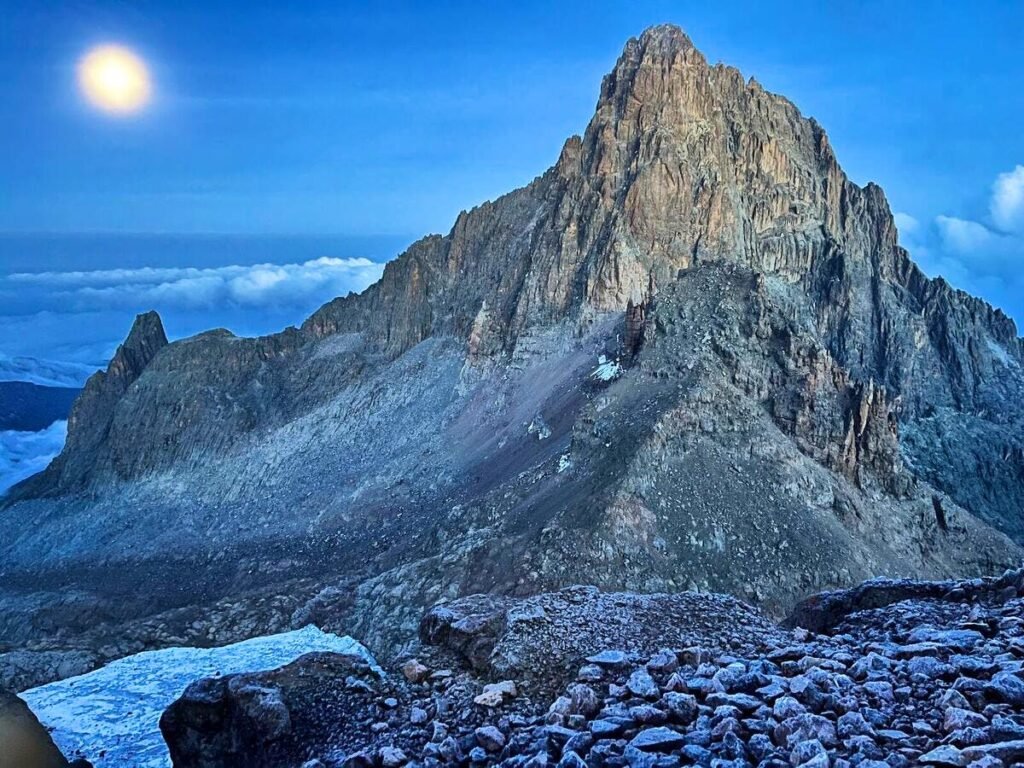Mount Kenya, a dormant volcano situated just south of the Equator in central Kenya, is Africa’s second-highest peak after Mount Kilimanjaro. Towering at an impressive 17,058 feet (5,199 meters) at its highest point, Batian, Mount Kenya is a stunning landscape of steep, pyramidal peaks, unique wildlife, and cultural heritage. Recognized as a UNESCO World Heritage site in 1997, Mount Kenya captivates climbers, adventurers, and cultural enthusiasts from around the world.

At its base, Mount Kenya rises from an elevation of around 5,250 feet (1,600 meters), with its circumference expanding to 95 miles (153 km) at the 8,000-foot (2,440-meter) contour. This towering massif is topped by several iconic peaks, including Batian, Nelion (17,022 feet), and Point Lenana (16,355 feet), each sculpted by ancient glacial action into a striking pyramidal shape.

Since the establishment of Mount Kenya National Park in 1949, the region has preserved over 277 square miles (718 square kilometers) of pristine ecosystems. The park supports a variety of large mammals, including elephants, buffalo, black rhinoceros, and leopards, as well as endangered species like the sunni buck and albino zebra.

The Kikuyu people, along with the Embu and Meru communities who inhabit the fertile lands surrounding the mountain, regard it with reverence. Known to the Kikuyu as Kirinyaga or Kere-Nyaga, meaning “Mountain of Whiteness,” it is seen as the sacred home of Ngai, their omnipotent deity. For generations, the Kikuyu have looked upon Mount Kenya’s snow-capped peaks as a holy site, preserving an enduring cultural connection that continues today.




